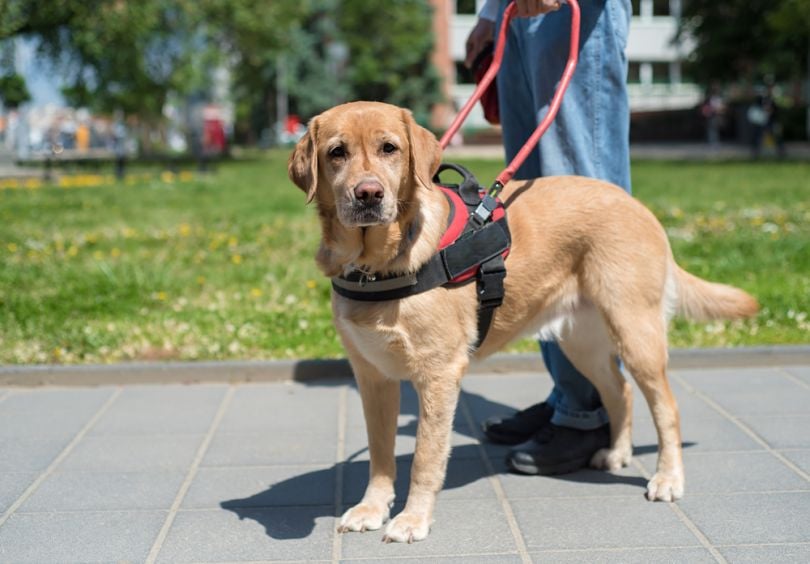
Autonomous vehicles will make up 85% of last-mile deliveries by 2025, according to a McKinsey report. As robo-delivery becomes the new norm, understanding the impact that robots will have on sidewalks is becoming a larger priority for Starship Technologies.
The Evening Standard reports that this purveyor of drone robots has been researching how these machines will affect people with visual impairments who use guide dogs on these sidewalks.
Working with Guide Dogs in Milton Keynes, a town 45 miles northwest of London, researchers studied how guide dogs, with or without human accompaniment, interacted with robots on sidewalks.
Meeting scenarios included “robots meeting the dogs face on or from behind, overtaking one another and heading towards each other at a road crossing,” according to the outlet.
Results showed that all guide dogs involved in the study had calm reactions to the presence of robots. Guide Dogs plans on incorporating these findings in future training of new recruits, which will be encouraged to treat the drones no differently than other pedestrian obstacles.
John Welsman, Policy Lead, Travel and Mobility at Guide Dogs, said: “Technology is constantly changing our environment and the way we live, so it’s vital that Guide Dogs as an organisation leads the way in shaping that environment for people with a vision impairment.
"We want all our guide dog owners and their dogs to feel confident about navigating the streets of the future, so we’re really pleased to have the opportunity to work with Starship on this initial study.”
"We believe that autonomous delivery can play an important role in supporting all individuals within communities by making people’s lives more convenient, including the visually impaired."
Meanwhile, Starship shares that the company intends to expand the project’s scope to understand how its drones will affect people with a broad range of visual impairments.
Lex Bayer, CEO of Starship Technologies, added: "We believe that autonomous delivery can play an important role in supporting all individuals within communities by making people’s lives more convenient, including the visually impaired.
“Working seamlessly alongside residents is a top priority for us, and we are continually looking at ways to enhance our services by engaging with organisations such as Guide Dogs to do just this".



